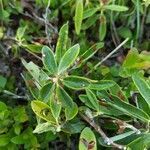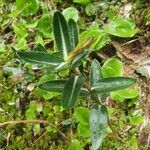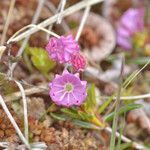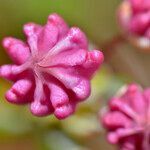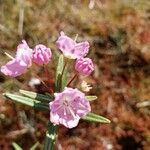Sparingly branched shrub to 1 m, with sharply 2-edged twigs; lvs opposite, subsessile, leathery, linear to lanceolate, 1–4 cm, revolute, whitened beneath with very fine hairs; fls from the upper axils, each subtended by a short folded bract, on pedicels 1–3 cm, forming a terminal corymbiform cluster; sep broadly ovate, imbricate, 3 mm; cor rose-purple, 10–16 mm wide; fr subglobose, 6–7 mm; 2n=48. Bogs; Lab. to Alas., s. to n. N.J., Mich., Minn., and Calif. May, June.
